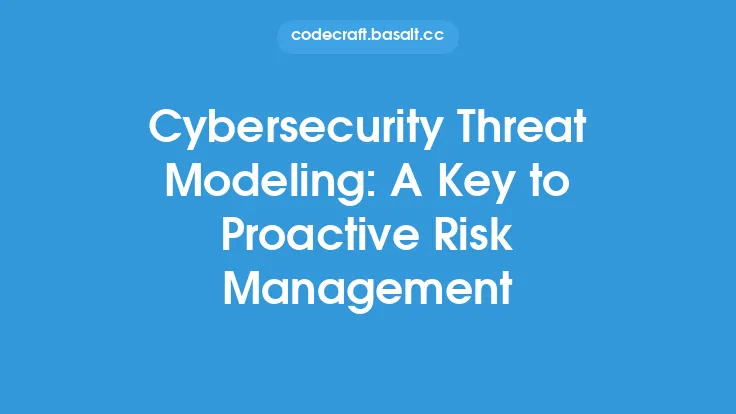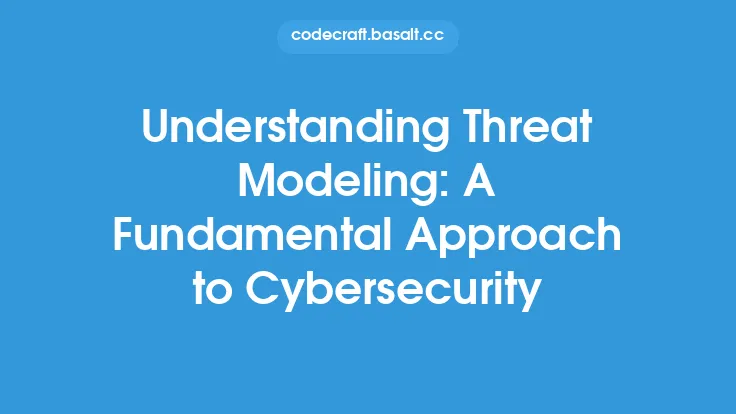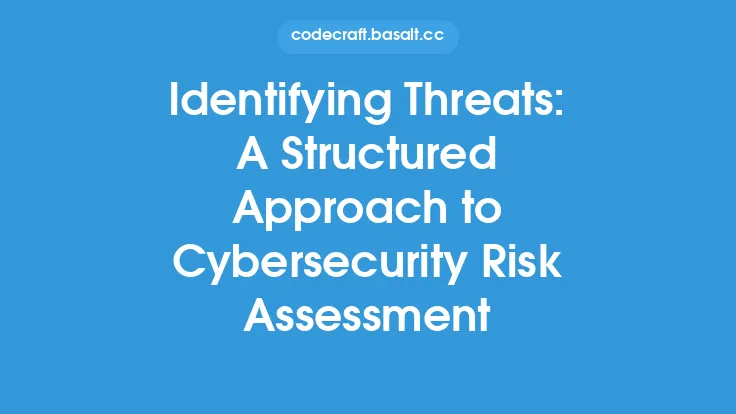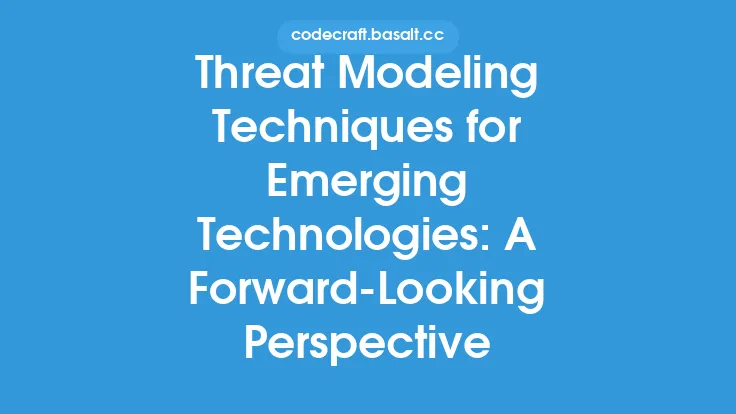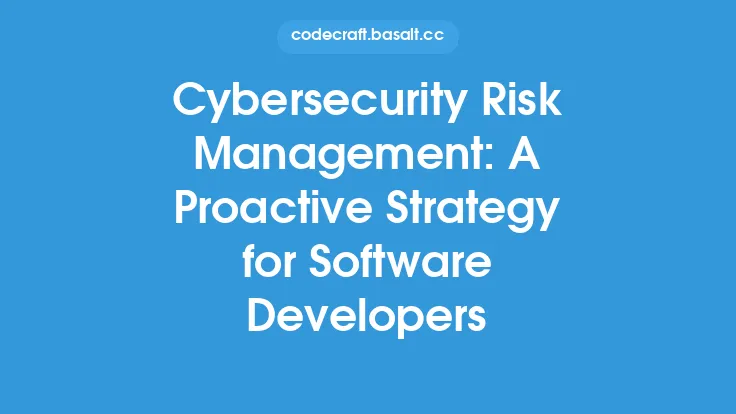Integrating threat modeling into the Software Development Life Cycle (SDLC) is a crucial step in ensuring the security and integrity of software applications. Threat modeling is a systematic approach to identifying, analyzing, and mitigating potential security threats to an application or system. By incorporating threat modeling into the SDLC, organizations can proactively address security concerns, reduce the risk of breaches, and ensure compliance with regulatory requirements.
Introduction to Threat Modeling in the SDLC
Threat modeling involves a comprehensive analysis of an application's architecture, design, and implementation to identify potential vulnerabilities and threats. This process typically involves a cross-functional team of stakeholders, including developers, security experts, and quality assurance professionals. The goal of threat modeling is to identify potential security risks and develop strategies to mitigate or eliminate them. By integrating threat modeling into the SDLC, organizations can ensure that security is considered at every stage of the development process, from requirements gathering to deployment.
Benefits of Integrating Threat Modeling into the SDLC
Integrating threat modeling into the SDLC offers numerous benefits, including improved security, reduced risk, and increased compliance. Some of the key benefits include:
- Early identification and mitigation of security threats, reducing the risk of breaches and data losses
- Improved compliance with regulatory requirements, such as PCI-DSS, HIPAA, and GDPR
- Enhanced security awareness and culture within the development team
- Reduced costs associated with remediating security vulnerabilities and responding to breaches
- Improved overall quality and reliability of software applications
Threat Modeling Activities in the SDLC
Threat modeling activities can be integrated into various stages of the SDLC, including:
- Requirements gathering: Identify security requirements and constraints, and ensure that they are incorporated into the application's design and architecture
- Design: Analyze the application's architecture and design to identify potential security vulnerabilities and threats
- Implementation: Review code and implementation details to ensure that security best practices are followed and potential vulnerabilities are addressed
- Testing: Perform security testing and validation to ensure that the application is secure and functions as expected
- Deployment: Ensure that security controls and configurations are properly implemented and maintained during deployment
Threat Modeling Techniques and Tools
Several threat modeling techniques and tools are available to support the integration of threat modeling into the SDLC. Some common techniques include:
- STRIDE (Spoofing, Tampering, Repudiation, Information Disclosure, Denial of Service, Elevation of Privilege): A threat modeling framework developed by Microsoft
- PASTA (Process for Attacking Security Threats): A risk-based threat modeling methodology
- OCTAVE (Operationally Critical Threat, Asset, and Vulnerability Evaluation): A risk-based threat modeling methodology developed by CERT
- Threat modeling tools, such as Microsoft Threat Modeling Tool, IBM Security Threat Modeling, and ThreatModeler
Best Practices for Integrating Threat Modeling into the SDLC
To effectively integrate threat modeling into the SDLC, organizations should follow best practices, including:
- Establish a cross-functional threat modeling team with representatives from development, security, and quality assurance
- Develop a threat modeling framework and methodology that aligns with the organization's security goals and objectives
- Integrate threat modeling activities into the SDLC, including requirements gathering, design, implementation, testing, and deployment
- Use threat modeling tools and techniques to support the threat modeling process
- Continuously monitor and update the threat model to ensure that it remains relevant and effective
Challenges and Limitations of Integrating Threat Modeling into the SDLC
While integrating threat modeling into the SDLC offers numerous benefits, there are also challenges and limitations to consider. Some common challenges include:
- Limited resources and budget for threat modeling activities
- Lack of security expertise and awareness within the development team
- Difficulty in integrating threat modeling into existing development processes and workflows
- Limited visibility and support from senior management and stakeholders
- Evolving nature of security threats and vulnerabilities, requiring continuous updates and refinements to the threat model
Conclusion
Integrating threat modeling into the SDLC is a critical step in ensuring the security and integrity of software applications. By incorporating threat modeling into the development process, organizations can proactively address security concerns, reduce the risk of breaches, and ensure compliance with regulatory requirements. While there are challenges and limitations to consider, the benefits of threat modeling far outweigh the costs. By following best practices and using threat modeling techniques and tools, organizations can effectively integrate threat modeling into the SDLC and improve the overall security and quality of their software applications.
